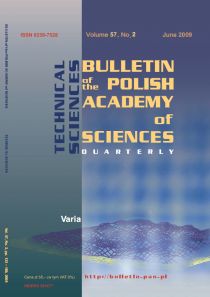POLISH ACADEMY of SCIENCES
TECHNICAL SCIENCES

Advanced materials and technologies
| BULLETIN
of the
POLISH ACADEMY of SCIENCES TECHNICAL SCIENCES |
 |
|||
|---|---|---|---|---|
| Volume
58, Issue 2, June 2010
Advanced materials and technologies |
||||
| Issue Index | Authors Index | Scope Index | Web Info | |
|
|
||||
| Aims&Scope, Subscription | Editors | Authors' guide | to read PDF files | mirror: http://fluid.ippt.gov.pl/~bulletin/ |
| pp 227 - 236 |
|---|
|
Routes and mechanisms towards self healing behaviour in engineering materials |
|---|
| S. van der ZWAAG |
| Modern man-made engineering materials demonstrate excellent mechanical properties, but the lack of the ability of self healing, i.e. the ability to remove or neutralise microcracks without (much) intentional human interaction, which is typical for most materials as encountered in nature. Such self-healing behaviour requires the presence of mobile species, atoms or molecules, in an otherwise solid material. Upon the occurrence of damage the mobile species directionally flow towards the damage location and once arrived there restores the contact between the two crack faces and the mechanical integrity. This directional flow may occur during regular use conditions (self healing behaviour) or conditions during which the mobility is temporarily increased (stimulated self healing). In this manuscript a brief overview of the routes and mechanisms which have been used to create self healing behaviour in the principal classes of engineering materials: polymers, metals, ceramics, concrete, asphalt, fibre composites, is presented. |
| Key words: |
|
self healing, damage, design |
|
|
| Issue Index | Authors Index | Scope Index | Web Info |
|---|---|---|---|
|
|
|||
| Aims&Scope, Subscription | Editors | Authors' guide | to read PDF files |
| Copyright ® Bulletin of the Polish Academy of Sciences: Technical Sciences |
|---|